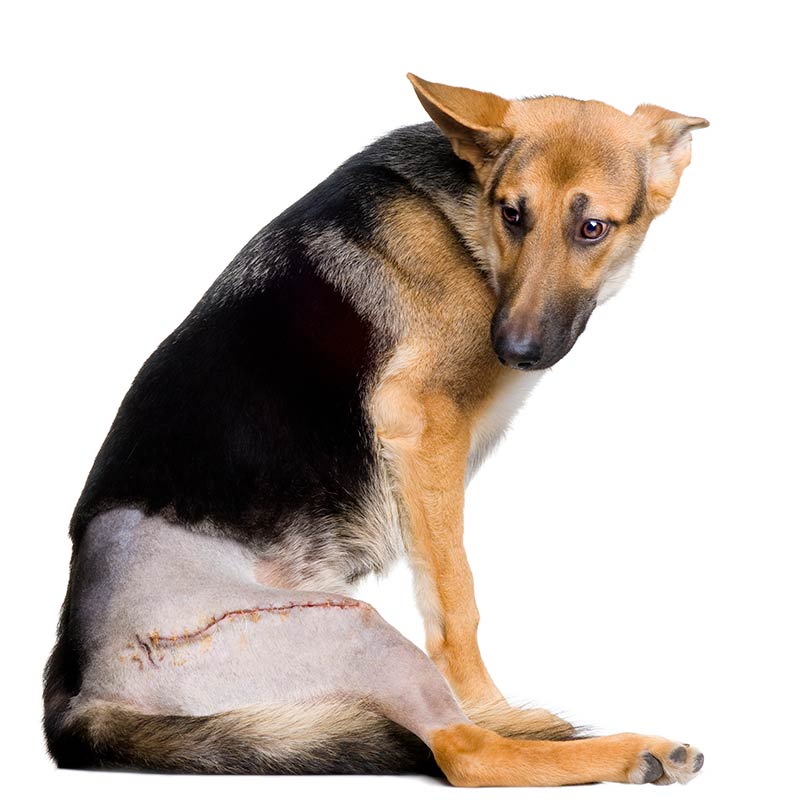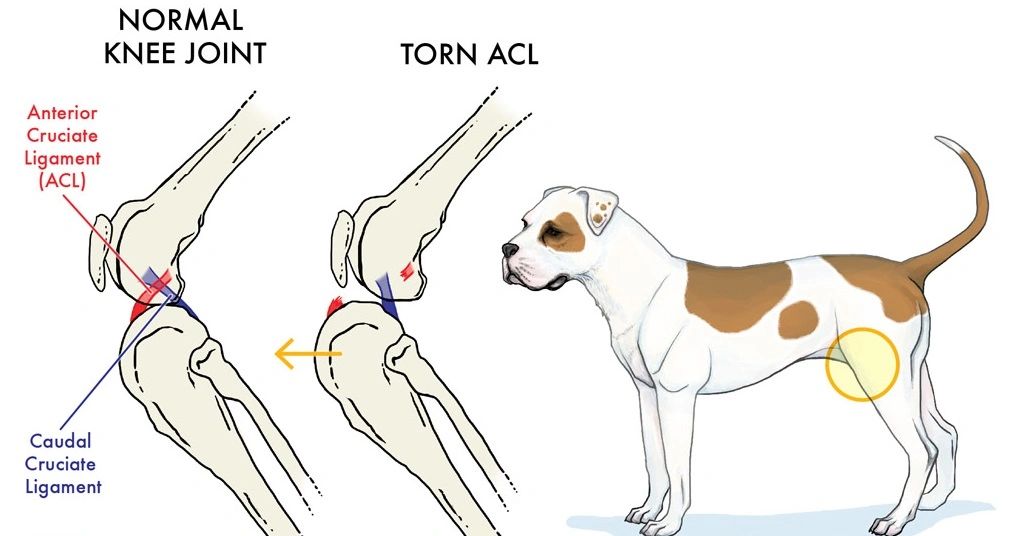

There are special manipulations that she will do on the rear legs that will identify whether the cranial cruciate ligament has been ruptured, torn or stretched.

The veterinarian will be assessing the stability or instability of the stifle on the affected hind leg. She will palpate (feel) the muscles and bones of the legs, usually starting at the feet and working upward. She will observe the dog’s posture when sitting, standing up and walking. Next, the veterinarian will examine the dog physically, from nose to tail. She will especially want to know whether the lameness came on slowly or suddenly.

When presented with a patient limping on one or both of its hind legs, the veterinarian with initially do several things.įirst, she will take a thorough history from the dog’s owner, paying particular attention to whether the dog had any recent trauma that may have caused an injury to the affected leg (such as jumping off the couch, running too quickly down the stairs, jumping out of the back of the truck, zooming around the yard and skidding in the mud, etc.). Fortunately, they are not particularly difficult for skilled veterinarians to diagnose. Diagnosis and Tests for ACL (CCL) Injuries in Dogs Initial EvaluationĬranial cruciate ligament injuries are quite common in domestic dogs. In many cases, dogs that are recovering from CCL injuries eventually need to be placed on a low calorie diet. Dogs that are not overweight, but are recovering from a CCL injury, should have their weight closely monitored. Overweight dogs should be placed on a strict diet. However, it is important for dogs with stifle injuries to maintain normal, and not excessive, weight, to prevent repeated CCL injuries. It can be hard to keep dogs from gaining weight when they are on restricted activity levels. To help their dog recover, pet owners will need to take the extra time to help their dog through these therapies. The dog should have a very soft, large, comfortable bed to rest on, and food and water dishes should be placed close to the dog’s bed for ease of access at all times.Īs a dog recovers from CCL injuries and surgery, low-impact therapies such as swimming and moderate amounts of walking may be recommended by the veterinarian. Owners should physically help their dog during this time to get up and down, and to walk outside to go potty. Restricted activities are especially important during the first few weeks of recovery post-operatively.

It is difficult to keep playful and energetic dogs quiet for that long of a period of time, but owners need to be diligent about helping their dogs maintain a low level of activity. Most dogs with CCL injuries require 8 to 12 weeks of restricted activity following surgical correction. This is something best discussed with the dog’s breeder and its attending veterinarian. Finally, dogs with conformational abnormalities in their rear legs that predispose them to CCL injuries probably should be spayed or neutered and not bred. He should be allowed to gradually work up to a point where vigorous activities are enjoyable and not overly stressing. After a period of inactivity, a dog should not be asked to engage in rigorous physical activities all of a sudden. Owners should keep their dogs on a high-quality diet and give them regular, moderate exercise. Conditioning seems to be the best approach.ĭogs that are in poor physical condition are at the greatest risk of injuring their CCL, while healthy, well-conditioned dogs are better able to avoid injuries, because their stifles are protected from outside stressors by strong surrounding musculature. Unfortunately, there is no fool-proof way to prevent stifle injuries in dogs, other than keeping them from playing and running around exuberantly, which is not a good option. Obesity certainly can contribute to chronic ligament damage as well, because it puts abnormal stress and weight on the stifle joint. Chronic damage develops slowly over time and can be caused by poor neuromuscular coordination, conformational abnormalities or poor muscle tone. The affected ligament probably experienced excessive wear and tear well before observable signs of damage became apparent.


 0 kommentar(er)
0 kommentar(er)
